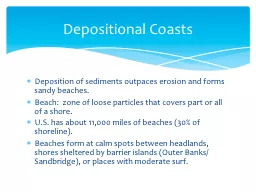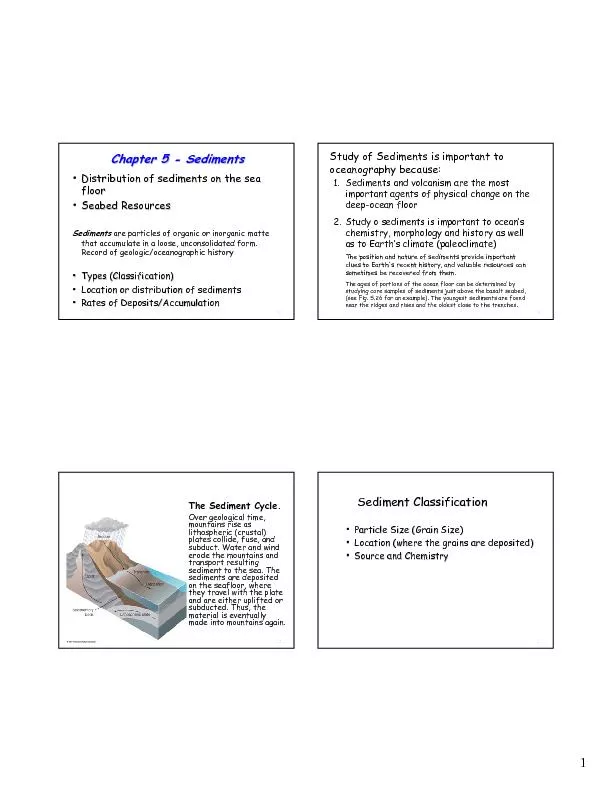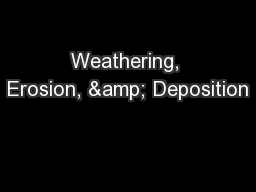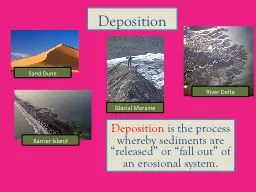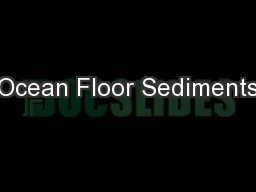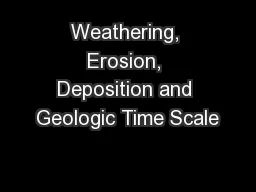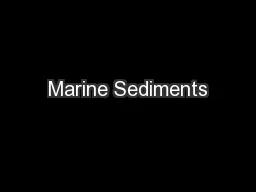PPT-Deposition of sediments outpaces erosion and forms sandy be
Author : trish-goza | Published Date : 2016-03-19
Beach zone of loose particles that covers part or all of a shore US has about 11000 miles of beaches 30 of shoreline Beaches form at calm spots between headlands
Presentation Embed Code
Download Presentation
Download Presentation The PPT/PDF document "Deposition of sediments outpaces erosion..." is the property of its rightful owner. Permission is granted to download and print the materials on this website for personal, non-commercial use only, and to display it on your personal computer provided you do not modify the materials and that you retain all copyright notices contained in the materials. By downloading content from our website, you accept the terms of this agreement.
Deposition of sediments outpaces erosion and forms sandy be: Transcript
Download Rules Of Document
"Deposition of sediments outpaces erosion and forms sandy be"The content belongs to its owner. You may download and print it for personal use, without modification, and keep all copyright notices. By downloading, you agree to these terms.
Related Documents

